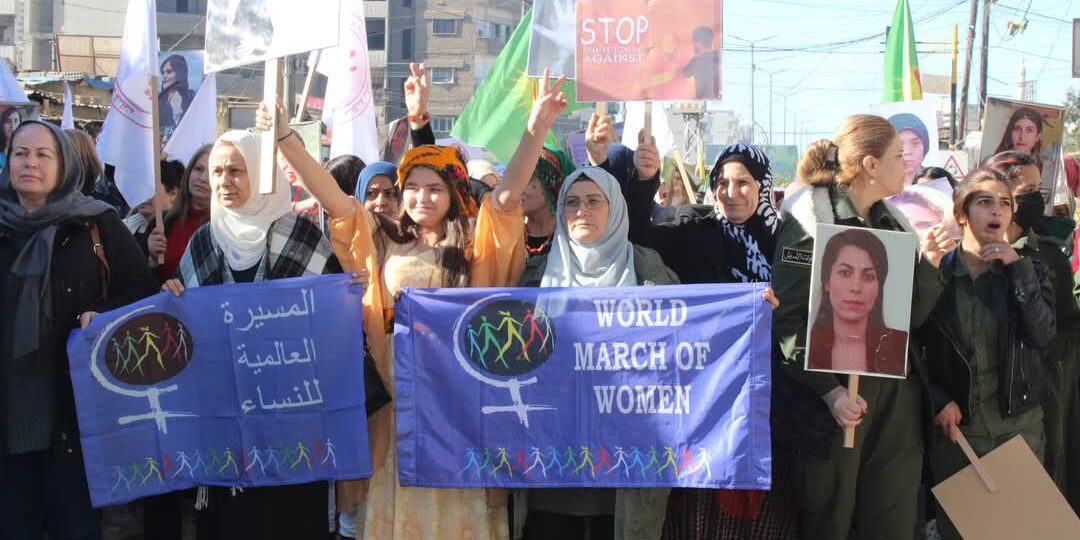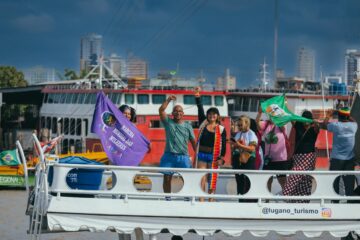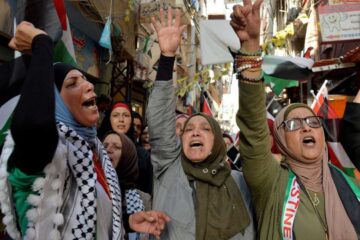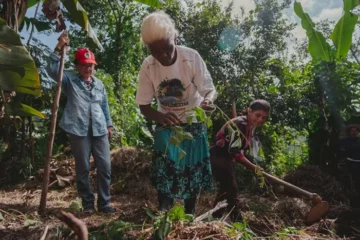Syria represents a clear example of the situation of women under authoritarian regimes. The country has been under the yoke of a chauvinistic system, where a single party has controlled all aspects of the state and societal institutions, failing to provide justice for women. Although the Syrian constitution of 1974 and subsequent years outlined opportunities for women, it did not grant them full equality in political, social, cultural, and economic participation.
Kurdish Women Under the Arab Nation-State in Syria
The Kurdish women in Syria have faced national oppression based on their identity, which has denied them their political and cultural rights, including the ability to learn, practice, work, write, and publish in their mother tongue. The Syrian constitution’s emphasis on the Arab character of the republic, as part of a broader Arab nation, has led to this systematic marginalization of Kurdish women and women from other ethnic groups, including Syriac, Turkmen, Circassian, Armenian, and Assyrian, under a system of dominant Arab identity.
This oppression was starkly manifested through the 1962 census, which led to stripping more than 250,000 Kurdish citizens of their Syrian nationality and citizenship rights. With the imposition of emergency law since that year, political activity was paralyzed. Then this reality was exacerbated by ongoing efforts to implement Arabization policies and impose cultural erasure, where the Kurdish language was prohibited, and Arabic was established as the official language in government offices and education.
The systematic suppression of Kurdish cultural identity extended to prohibiting all manifestations of Kurdish culture, including celebrating Kurdish festivals and national holidays. Kurdish women suffered from all forms of oppression, whether national, social, economic, or legal, making her a double victim: suffering from the patriarchal society with its backward customs and traditions, and simultaneously from national and class oppression.
Despite all these challenges, the Kurdish woman’s rebellion against reality cannot be denied. She preserved her inherited cultural legacy, nurturing national values by reviving Kurdish folklore and literature. She even practiced these values in her daily life, singing her songs into her infant’s ear. She reached a high level of awareness and organization, struggling to this day to gain her rights. This struggle contributed to improving her social, economic, educational, cultural, and legal status, allowing her intellectual and organizational development. She prepared the ground for adopting and passionately participating in the July 19, 2012 revolution (Northeast Syria Revolution) against the oppressive Ba’athist regime.
The Kurdish woman remains a symbol of resilience and challenge, always seeking to achieve her rights and assert her existence in a challenging society. Her struggle is an integral part of the broader fight for freedom and equality, inspiring women from other marginalized components (Syriac, Armenian, Assyrian, Circassian) who were sidelined by the authoritarian single-party system.
The Women’s Revolution in Northeast Syria
The women’s revolution in Northeast Syria adopted the slogan “Woman, Life, Freedom”, based on several fundamental pillars, including equal participation, where women represent 50% in all executive, legislative, and other fields. Institutions were also built from the lowest to the highest level according to the principle of co-presidency, ensuring that management consists of two persons: a woman and a man, as an essential condition that cannot be bypassed.
In addition, women-specific organizations were established, and women’s offices were opened in all public bodies and institutions to empower women and enable their engagement in the workforce. Articles and rules were issued in the social contract (as a community constitution) that focus on women’s rights, which contributed to ensuring her fairness and guaranteeing her rights in political, economic, social, and personal status practices.
Women’s participation was not limited to civil and social domains, but they were also active in legitimate self-defense and national defense. They formed women’s protection units, establishing a model of a fighting woman seeking to secure her rights. Additionally, they created an internal women’s security force (Women’s Asayish) and community protection units to safeguard neighborhoods and villages during the general mobilization.
In the fields of education, economic projects, and media, women’s struggle in Northeast Syria has brought about notable changes in these institutions, leading to transformations in societal and cultural concepts. Particularly after developing the Jineologi Academy, a science centered on women’s knowledge, to train women in progressive ideas and lay the foundational cornerstone for a cultural and social renaissance. The academy has also created programs to integrate women’s studies into educational systems from schools to universities, with the aim of nurturing an enlightened emerging generation.
Syrian Women in the Context of Recent Political Changes
Syria is experiencing radical transformations in its political landscape, having suffered under an authoritarian nationalist regime with an iron security grip and the colonial policies of capitalist powers. This situation was evident in the Arab Spring revolutions, where overthrowing governments was a popular demand. However, dominant powers used these movements to control these countries, exploiting street anger and legitimate popular demands by promoting Islamism and political Islam. This was followed by military interventions that killed the revolution through military coups or internal factional wars, transforming the spring into a bloody autumn.
Following the outbreak of popular uprisings in Syria, external powers worked through their internal agents, especially Salafist Islamic movements, to take advantage of the uprising for their own purposes. Thus, Syria became a breeding ground for terrorist Islamic movements and their conflicting factions, leading to the division of the country into three areas according to the influence of controlling powers.
The Syrian conflicts, rising unemployment and poverty, and educational deficiencies led to women being exploited as propaganda tools for ongoing struggles, rather than working to establish civil peace. Despite Syria’s composition of diverse peoples, minorities, and religions, the country lacks a foundation for national cohesion, and diversity has become a curse instead of a blessing.
In this context, the dictatorial regime and reactionary opposition offered nothing but regression in spreading their ideas, leading to demands for a Sunni Islamic rule. With religious factions (under the banner of Islam) reaching Damascus and overthrowing Bashar al-Assad’s rule on December 8, 2023, the equation in Syria shifted from difficult to even more difficult. Political Islam and its known terrorist extremist groups, notorious for beheading women in public squares and stoning them under the pretext of ‘enjoining good and forbidding evil,’ have not improved the situation. Their Sharia laws rejected civil laws, further exacerbating the problem. Under these conditions, women in those regions turned against the prevailing legislations that rejected everything related to democracy, women’s freedom, gender equality, and the criminalization of child marriage.
Syria has gone through more than 14 years of fighting and conflicts, which fueled sectarianism and religious tensions.With hundreds of thousands killed and millions displaced, establishing security and civil peace in a short time became extremely difficult.The state of tension, desire for revenge, and loss of security make people fear for their lives, which exacerbates cycles of revenge, security breakdown, and uncontrolled weapons.
The country is now governed by a single Islamic entity, which is implementing problematic decisions, including: curriculum changes, removing scientific content under the pretext of “opposing religion”, eliminating subjects like philosophy and sculpture arts, and removing historical figures like Zenobia and Nazik Al-Abid from educational materials. Moreover, the statements made by the Prime Minister of the interim government regarding women reflect a regression in rights, as he rejected women’s participation in jobs under the pretext of biological differences from men. One of the tragicomic situations is the statement by Ahmed Al-Sharaa (Abu Muhammad Al-Jolani), head of the interim government in Syria, ‘We will not be like Afghanistan and we will agree to women’s right to education,’ which shocked Syrian women, leaving them unsure whether to believe what they were hearing. The implication is: Is it conceivable that after the significant achievements Syrian women have accomplished over decades, they are now back to discussing their basic right to learn?
The head of Women’s Affairs in the Syrian Interim Government (Aisha Al-Debs) came out with statements that Syrian women are not accustomed to hearing. She set a priority list for women that includes family care and child-rearing, which demonstrated a regression in work and empowerment.
She rejected any differences and will not accept any opinion from feminist organizations or others that contradict her intellectual orientation or are inconsistent with the governmental model, under the pretext that dissent represents foreign culture that would destroy Syria’s cultural foundations. This stance ignores Syrian women’s sacrifices during the revolution, and completely disregards Syria’s reality of diverse cultures encompassing different religions, ethnicities, and sects. Meanwhile, media campaigns – particularly on social platforms – have intensified promotion of the “modest Muslim woman” image through street distribution of niqabs, religious pamphlets, public speeches urging face-covering with hijabs, and advocacy for Islamic dress codes.
Clashes continue on the outskirts of northeastern Syria, where Turkish-backed armed factions, supported by the Turkish army, are launching their most fierce attacks on the northeastern regions. These attacks aim to weaken the presence of the Democratic Autonomous Administration in the area, which seeks to build a democratic society that includes all national and religious components.
Since the fall of the Syrian regime on December 8, 2024, areas in northeastern Syria have suffered the horrors of war. The attack by factions on the Shahba region, which includes displaced Kurds, led to horrific crimes such as slaughter, beheadings, and field executions. All these violations forced people to flee through the wilderness in search of safety, but the attacks continue to pursue them. Not a day passes without news of targeting defenseless civilians and women.
In light of these developments, the Syrian Women’s Council and other women’s organizations in Northeast Syria announced a feminist initiative as a roadmap for solving and shaping Syria’s future within a decentralized democratic republic, aiming to protect the rights of national and religious components and enhance women’s participation. The initiative included 13 steps to ensure equal and fair representation of women in the new Syria, where one of the most important conditions that will guarantee local and international legitimacy for the future system of the new Syria is for women to have a role in establishing this new system. According to these steps, Syrians will determine their country’s future, they will adhere to peace agreements, there will be a stop to attacks on Syrian territories, occupying armies will be withdrawn, and a safe and dignified return of displaced persons and refugees will be ensured. The most important aspect of the initiative is focusing on ensuring fair representation of all Syrian women and women’s organizations in the new constitutional committee, and commitment from the current and future government to implement UN Resolution 1325, taking measures to guarantee their participation in peace processes, neutralizing women from conflicts, and ensuring their presence in decision-making centers. It also emphasized the necessity of forming a fact-finding and transitional justice committee for war crimes and crimes against women, and recognizing women’s right to defend themselves according to the principles outlined in this regard, along with the full implementation of human rights. The initiative (roadmap for the solution) also included the importance of establishing the necessary committees to care for children and address the psychological and physical harm inflicted on children during the war.
Achieving security and stability in Syria requires joint efforts from all societal components, with a focus on building a democratic society that respects human rights and women’s rights, and promotes tolerance and acceptance among all societal groups. It necessitates working to strengthen women’s rights during conflicts through awareness-raising, organization, and self-defense advocacy.

Nobahar Mustafa is a member of the Secretariat of Nada Alliance (Regional Democratic Women’s Alliance) in Syria.




